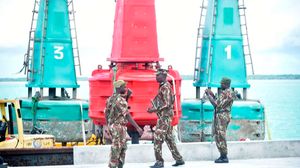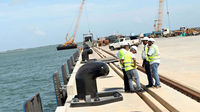Geza Ulole
JF-Expert Member
- Oct 31, 2009
- 59,186
- 79,385
Evidence? I see used equipments! These is what u have ordered at a price of brand new!We have also ordered brand new equipments that are already on their way to Kenya and will arrive soon.
According to the authorities, yard and marine services operations equipment for the first berth have been identified, and a contract awarded for the transportation of these equipment.Evidence? I see used equipments! These is what u have ordered at a price of brand new!
Huyo jamaa anaumia sana, anatamani Lamu Port ingekuwa Tz.Kuna mtu anaumia sana kuona kwamba Lamu port inaanza kufanya kazi. Anahisi tu kujinyonga.
😂😂😂😂Punguza uchokozi😂😂😂Tunangoja vifaa kuu kuu pia visafirishwe kutoka Dar Kwenda Bwaga moyo most advanced largest Port
According to the authorities, yard and marine services operations equipment for the first berth have been identified, and a contract awarded for the transportation of these equipment.
They include seven terminal tractors, 14 trailers, two Rubber Tyred Gantries (RTG) , four forklifts and two utility vans for yard operations.
Marine services (operations) equipment are two tugboats, one pilot boat, one mooring boat, one fire engine and an ambulance.
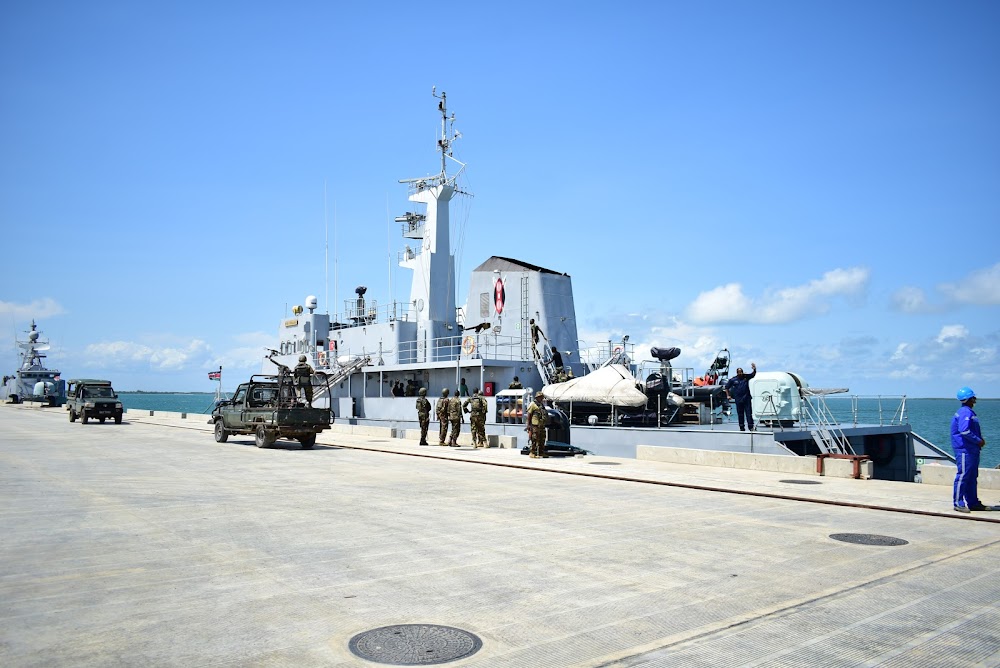
KPA readies for first ship at Lamu Port, equipping facility
The country's second major sea port is set for operationalisation in Junewww.the-star.co.ke
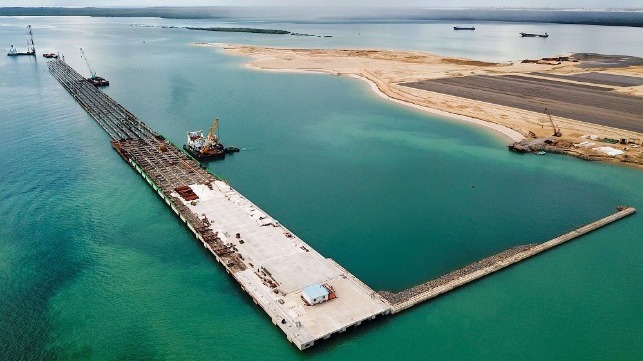
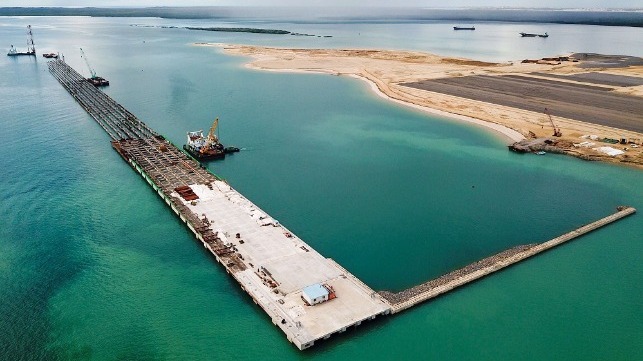
Unakuanga mtu wivu sana🤣🤣🤣🤣🤣🤣Lamu Port: Kenya's Transshipment Hub Risks Becoming a White Elephant

Lamu Port under construction (LAPSSET Corridor Program)
BY NJIRAINI MUCHIRA04-26-2021 10:47:47
The Kenyan government faces a hard decision over whether to encourage shipping lines to make use of the new Lamu Port, which is set for commissioning in June. If traffic shifts to Lamu, the government risks failure to generate enough revenue from its main gateway facility, Mombasa Port.
After years of delay, Kenya is preparing to open Lamu Port for business on June 15. The port's commissioning marks the completion of the first three berths at a cost of $367 million, but industry experts warn that the facility risks becoming a white elephant.
"Lamu port is at the risk of becoming a white elephant because I don’t know who is going to use it come June. Factors against its viability are many and unless Kenya negotiates with Ethiopia, the facility will not achieve its purpose," said Wycliffe Wanda, the executive officer of the Kenya International Freight and Warehousing Association.
To start with, the government is grappling with the tough choice of pushing business to Lamu Port, a decision that would mean decline in revenues for Mombasa Port. The ripple effects could include an inability to generate enough revenue to repay the Chinese loans that were used to construct Kenya's Standard Gauge Railway (SGR) project.
Mombasa port is the main source of business for SGR, because 40 percent of the port's cargo is required to be transported on the line to the hinterlands - mainly the Nairobi and Naivasha inland container depots.
Another challenge facing the Lamu Port is waning interest by Ethiopia and South Sudan, the two countries that were expected to be the main source of transshipment business for the facility. The port is a key part of the wider Lamu Port South Sudan-Ethiopia Transport (LAPSSET) Corridor, which is being implemented at a total cost of $24 billion.
Landlocked Ethiopia, which mainly uses the port of Djibouti, has shifted its interest from the Lamu Port to the Somaliland port of Berbera, where it is partnering with DP World to build a regional trade hub for the Horn of Africa. Ethiopia has since acquired a 19 percent stake in the Berbera Port project, and DP World is investing $442 million to expand and increase its capacity by 500,000 twenty-foot equivalent units (TEU) per year.
Ethiopia is also seeking a stake in Eritrea Port following the cessation of hostilities between the two neighbors.
Despite Lamu Port's design as a transshipment hub, transit cargo in Kenya remains minimal, with the port of Mombasa handling about 120,000 TEU in 2018 and 210,000 TEU in 2019 out of a total of 1.3 million TEUs. This means the facility may struggle to attract business.
Threats of insecurity - particularly from the terrorist group al-Shabaab - and delays in completion of road networks are other factors that could see Lamu Port become an expensive but idle facility. Last week, the Kenya National Highway Authority awarded a $166 million contract to China Communications Construction Company (CCCC) to implement two key road projects that are central to making the port feasible. CCCC is also constructing the port.
Additional challenges facing Kenya’s crude oil project - including construction of a pipeline to Lamu Port - mean that it might take years before the country can start utilizing the facility in exporting its crude resources to the international markets.
Conceived in 2012, Lamu Port was originally designed to be a massive $3 billion project that would be implemented over a 16 year period. As envisioned, it would have a total of 32 berths and a total capacity of 24 million tonnes of cargo per year.
Though shipping lines like Maersk and Express have indicated a desire to direct some cargo to the new facility, Lamu Port faces many challenges ahead and its future is still uncertain.
The opinions expressed herein are the author's and not necessarily those of The Maritime Executive.

Lamu Port: Kenya's Transshipment Hub Risks Becoming a White Elephant
The Kenyan government faces a hard decision over whether to encourage shipping lines to make use of...www.maritime-executive.com
its "unakuaga" not unakuanga!!Unakuanga mtu wivu sana🤣🤣🤣🤣🤣🤣
Nyinyi wote mpo wrong. Kiswahili sanifu ni "huwa una wivu."its "unakuaga" not unakuanga!!
na wrong ni Kiswahili sio? Nimejaribu kumrekebisha unakuwaga inakubalika kiasi fulani!Nyinyi wote mpo wrong. Kiswahili sanifu ni "huwa una wivu."


Unakuaga ni kiswahili cha mtaani lakini huwezi kukitumia katika mtihani au shuleni.na wrong ni Kiswahili sio? Nimejaribu kumrekebisha unakuwaga inakubalika kiasi fulani!
Nimetoa na link!
Lamu Port: Kenya's Transshipment Hub Risks Becoming a White Elephant

Lamu Port under construction (LAPSSET Corridor Program)
BY NJIRAINI MUCHIRA04-26-2021 10:47:47
The Kenyan government faces a hard decision over whether to encourage shipping lines to make use of the new Lamu Port, which is set for commissioning in June. If traffic shifts to Lamu, the government risks failure to generate enough revenue from its main gateway facility, Mombasa Port.
After years of delay, Kenya is preparing to open Lamu Port for business on June 15. The port's commissioning marks the completion of the first three berths at a cost of $367 million, but industry experts warn that the facility risks becoming a white elephant.
"Lamu port is at the risk of becoming a white elephant because I don’t know who is going to use it come June. Factors against its viability are many and unless Kenya negotiates with Ethiopia, the facility will not achieve its purpose," said Wycliffe Wanda, the executive officer of the Kenya International Freight and Warehousing Association.
To start with, the government is grappling with the tough choice of pushing business to Lamu Port, a decision that would mean decline in revenues for Mombasa Port. The ripple effects could include an inability to generate enough revenue to repay the Chinese loans that were used to construct Kenya's Standard Gauge Railway (SGR) project.
Mombasa port is the main source of business for SGR, because 40 percent of the port's cargo is required to be transported on the line to the hinterlands - mainly the Nairobi and Naivasha inland container depots.
Another challenge facing the Lamu Port is waning interest by Ethiopia and South Sudan, the two countries that were expected to be the main source of transshipment business for the facility. The port is a key part of the wider Lamu Port South Sudan-Ethiopia Transport (LAPSSET) Corridor, which is being implemented at a total cost of $24 billion.
Landlocked Ethiopia, which mainly uses the port of Djibouti, has shifted its interest from the Lamu Port to the Somaliland port of Berbera, where it is partnering with DP World to build a regional trade hub for the Horn of Africa. Ethiopia has since acquired a 19 percent stake in the Berbera Port project, and DP World is investing $442 million to expand and increase its capacity by 500,000 twenty-foot equivalent units (TEU) per year.
Ethiopia is also seeking a stake in Eritrea Port following the cessation of hostilities between the two neighbors.
Despite Lamu Port's design as a transshipment hub, transit cargo in Kenya remains minimal, with the port of Mombasa handling about 120,000 TEU in 2018 and 210,000 TEU in 2019 out of a total of 1.3 million TEUs. This means the facility may struggle to attract business.
Threats of insecurity - particularly from the terrorist group al-Shabaab - and delays in completion of road networks are other factors that could see Lamu Port become an expensive but idle facility. Last week, the Kenya National Highway Authority awarded a $166 million contract to China Communications Construction Company (CCCC) to implement two key road projects that are central to making the port feasible. CCCC is also constructing the port.
Additional challenges facing Kenya’s crude oil project - including construction of a pipeline to Lamu Port - mean that it might take years before the country can start utilizing the facility in exporting its crude resources to the international markets.
Conceived in 2012, Lamu Port was originally designed to be a massive $3 billion project that would be implemented over a 16 year period. As envisioned, it would have a total of 32 berths and a total capacity of 24 million tonnes of cargo per year.
Though shipping lines like Maersk and Express have indicated a desire to direct some cargo to the new facility, Lamu Port faces many challenges ahead and its future is still uncertain.
The opinions expressed herein are the author's and not necessarily those of The Maritime Executive.

Lamu Port: Kenya's Transshipment Hub Risks Becoming a White Elephant
The Kenyan government faces a hard decision over whether to encourage shipping lines to make use of...www.maritime-executive.com
Disgruntled citizen
Those r fellow Kenyans! Here they r saying since 2012 Lamu has been under construction! Operation will start next year! Hear them attesting to nearly end lifespan of equipments delivered to Lamu port!Mr Wivu naona Lamu port imekukosesha usingizi.
